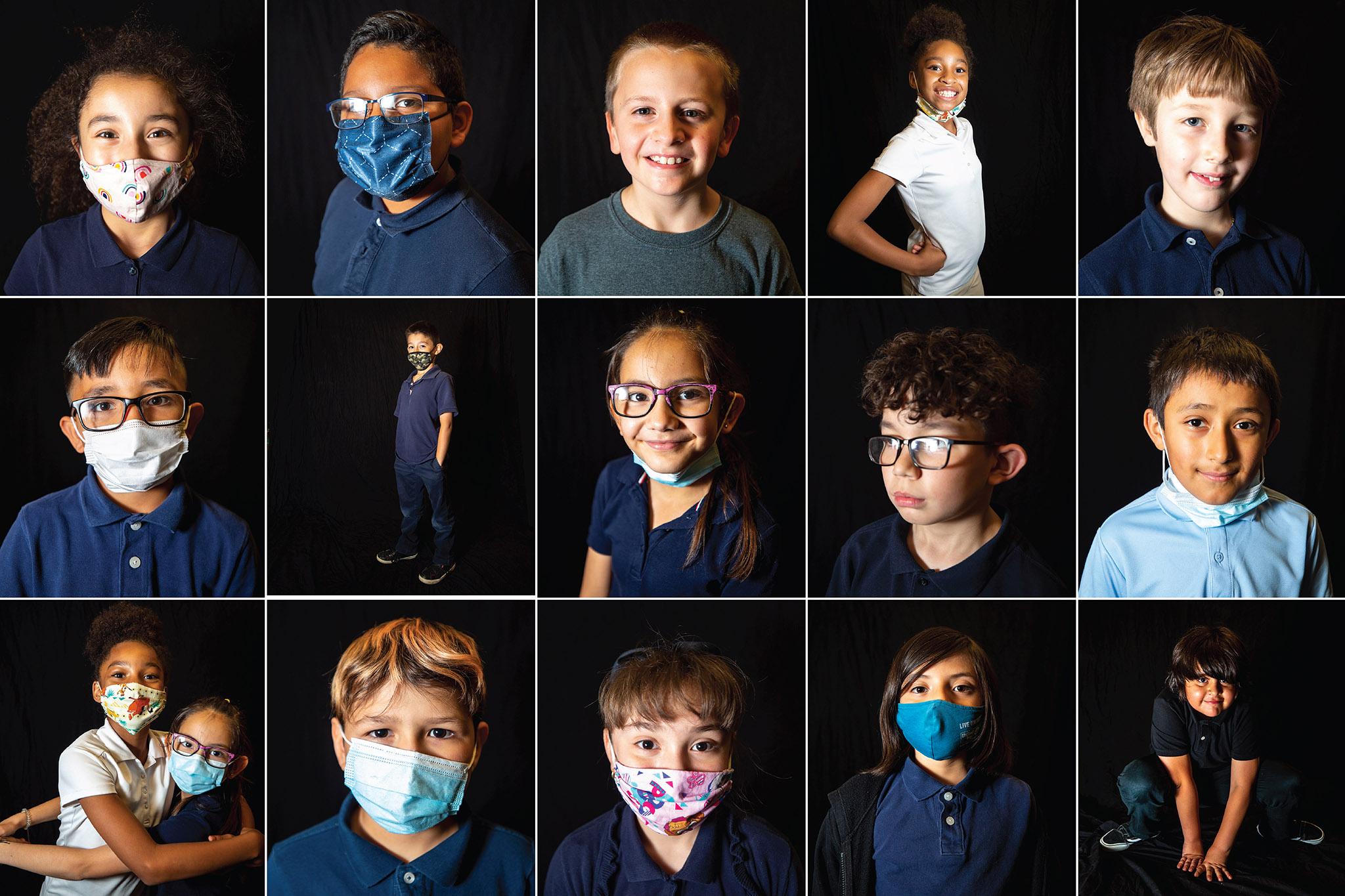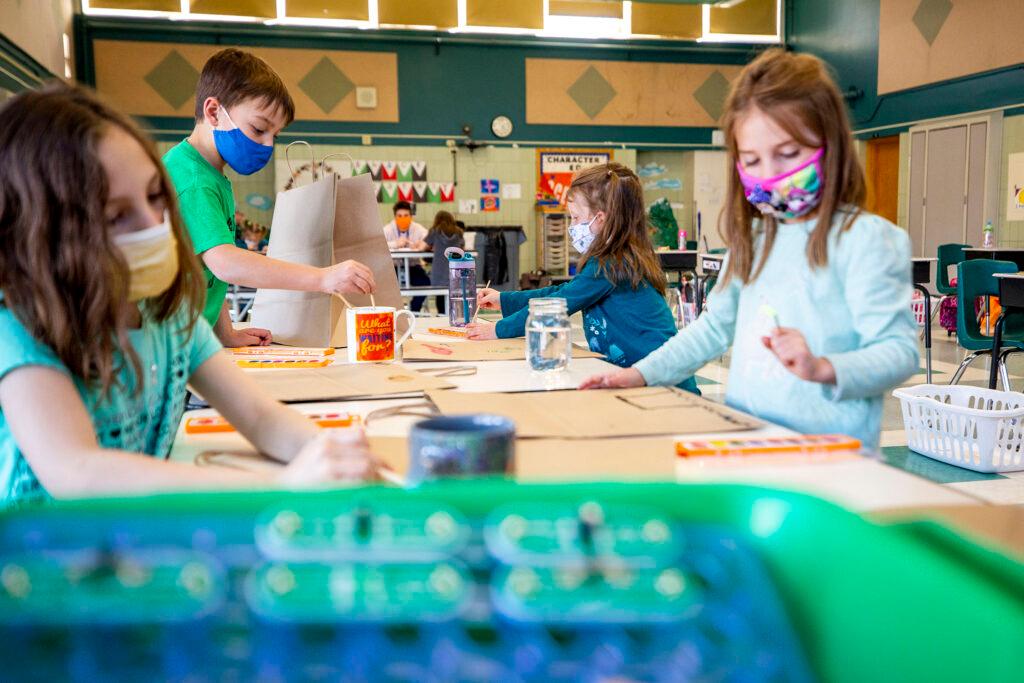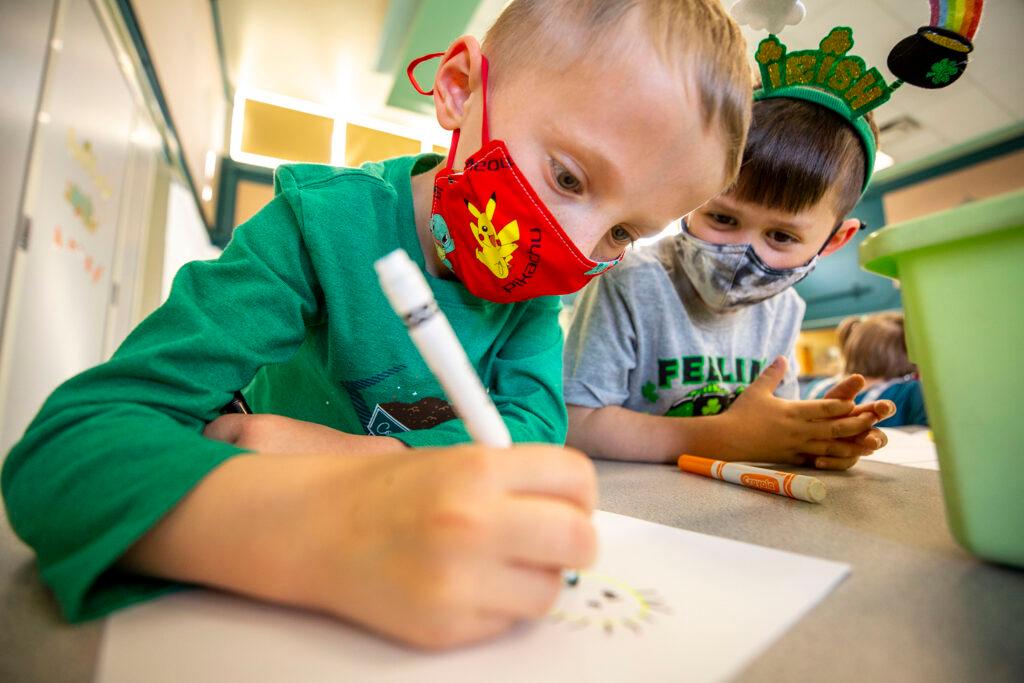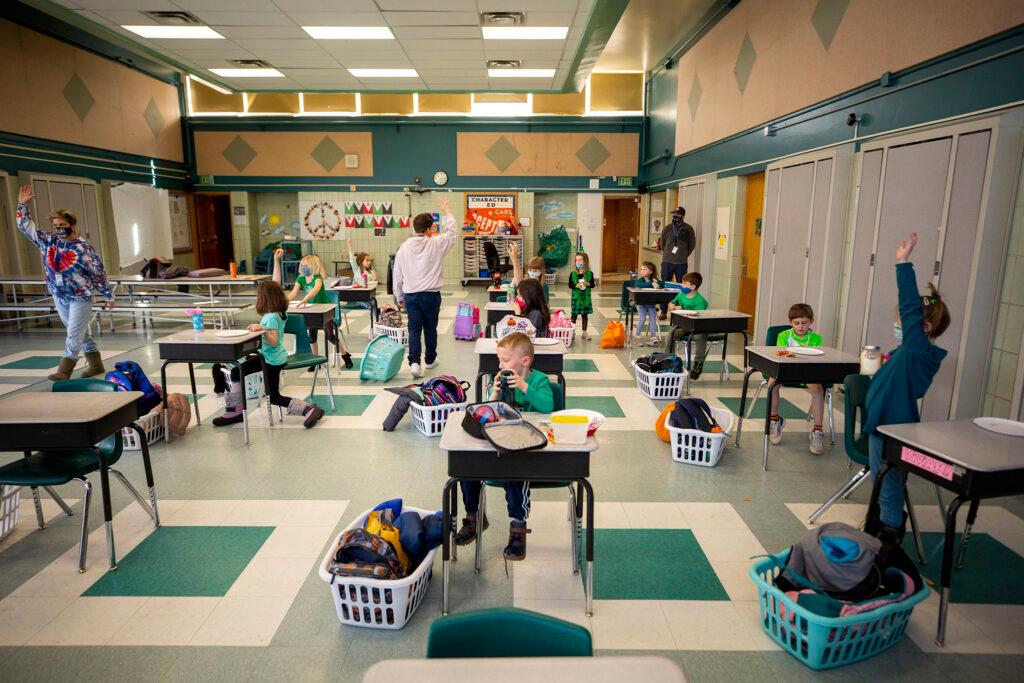
Rising COVID-19 case rates across the state have prompted local public health agencies and school districts to issue new mask mandates just as schools are reopening throughout Colorado. In many cases, the orders represent reversals of positions taken just a month or so ago, creating a whipsaw effect for confused parents.
Here’s how we got here.
Q: What has been happening at Colorado schools the past few days?
A: Last Friday, the executive director of Tri-County Health, the public health agency serving Adams, Arapahoe and Douglas counties, notified school superintendents that he recommended to his board that a new public health order be adopted requiring face coverings in schools, particularly covering younger students. That triggered Cherry Creek and Aurora public schools to immediately issue mask requirements for some of their schools, reversing earlier decisions to simply urge students to wear masks. Before the day was out, Adams 12 schools and Eagle County also decided to require masks in schools.
The Tri-County board eventually adopted that order, and Douglas County schools followed suit, requiring masks for students and staff in grades PK-6.
In Denver, where schools were already going to require masks, the county Public Health agency then extended an existing order to cover private schools, and daycare settings, requiring kids as young as two to wear face coverings while inside at pre-school.

Q: Two-year-olds wearing masks? Is that realistic?
A: Anyone who has ever tried putting a shirt on a toddler knows that ordering one to keep a mask on all day is probably more aspirational than operational. Personal freedom is big among toddlers. But there is no indication that masks are unsafe for kids as young as two and public health authorities figure that any effort to reduce the spread of the virus is better than no effort at all.
Q: But what is the real risk? Has the virus actually harmed young kids?
A: Children younger than 12 are not yet eligible for COVID-19 vaccine, so, unlike with the seasonal flu, neither they nor their parents get a choice in this. The American Academy of Pediatrics reports that 18 children aged 0-19 in Colorado have died from COVID-19. It is believed that three of those were four or younger. Another 1,115 in that age range have been hospitalized by COVID-19, with 385 of those being younger than 10.
Q: How does that compare to the seasonal flu?
A: In the 2019-20 flu season, 199 pediatric deaths were reported nationally, the highest total in at least three years. From May of 2020 through last week, 378 pediatric deaths from COVID-19 had been reported to the American Academy of Pediatrics by 43 states, Puerto Rico, New York City and Guam. (That’s how the data is compiled on this still-evolving illness).
Q: Speaking of vaccines, when will children under 12 become eligible? How can we be talking about booster shots for adults before kids are protected?
A: Pfizer plans to submit data from clinical trials with children 5-11 years old in late September, as part of a request for an emergency use authorization, similar to the one now governing use of the vaccines. Moderna may not be ready to file their application until early next year. So the earliest younger children will be eligible is late fall or early winter, after the Food and Drug Administration and Centers for Disease Control and Prevention have had a chance to review and rule on the Pfizer request.
Data on trials among kids 2 to 5 will follow and then for infants to 2-year-olds.
At this point, there is not a competition for doses, at least not in the U.S., and providing booster shots to adults and teens will have no effect on the timeline for getting first doses to younger kids.

Q: Back to the mask mandates in schools. What gives the government the authority to dictate this?
A: Mandates have been a flashpoint throughout the pandemic, but the notion that government should take action to protect public health has been around since Cicero wrote salus populi suprema lex esto (the health of the people should be the supreme law) in his ancient Roman treatise “On the Laws” sometime around 59 BC. Cicero’s concepts were adopted by John Locke, whose ideas about government were the foundation for the U.S. Constitution. George Washington ordered troops to be vaccinated against smallpox even before America was America. Government taking actions that may inconvenience individuals to further public safety has been around for a long time. Colorado statutes give the governor and local public health agencies broad authority to take actions to protect public health.
Q: Are the COVID-19 case rates really bad enough to merit these new restrictions?
A: Public health officials pretty universally agree that they are, but the goalposts have been moved during the pandemic. On July 27, the CDC surprised a lot of people in the health community by recommending that even vaccinated people go back to wearing masks while indoors in communities with “substantial or high transmission.” The CDC defined that as places where the number of total cases in a week equaled more than 50 per 100,000 residents of that community. That’s not a metric that a lot of Colorado counties even publish on their sites, or that the state puts on its main website for COVID data. In April, having fewer than 100 cases in a week per 100,000 residents would have been considered level “blue” on the state’s dial, and case rates would have to exceed 300 to move a county beyond level “yellow.”
The state is now hovering around 77 cases per 100,000 in a week. The state has just 10 counties with fewer than 50 cases per week per 100,000 residents, all of them rural.

Q: Why does that case metric matter?
A: It is an indicator of community spread of COVID-19, which continues to be confined almost entirely to unvaccinated people, including children. Of perhaps more immediate impact, the 50 weekly cases per 100,000 has been adopted by some school districts or health departments as the point at which they would drop mask requirements in schools.
Q: But don’t unvaccinated people collect some level of immunity when they get infected? Won’t that eventually get us to 100 percent protection in society?
A: Theoretically, yes, though there is evidence that immunity wanes over time, and that alone could extend the pandemic. As of today, there are about 2.5 million people in Colorado, including children, who are not fully immunized. Almost 600,000 have now caught COVID-19, and 593,000 of those survived, leaving 1.9 million to catch it and gain some level of immunity. At our current rate of about 1,000 new infections per day, it would take more than five years for COVID-19 to work its way through that entire population. During that time, it would continue mutating, eventually moving beyond the reach of vaccines, requiring new formulations, more boosters, more mask mandates, and perhaps even new lockdown measures.
Experts are in near universal agreement — and the data makes clear — that vaccination is the fastest, safest route out of the pandemic. The vaccine is free to everyone in the state, and, for now people can receive a gift card for getting a shot. Vaccine providers can be found here.
- Eagle County Law Enforcement Reporting To Schools To Prevent Conflict Over Mask Mandate
- More And More Colorado School Districts Will Require Kids To Mask Up For Class
- Polis Sees No Need For A Statewide Mask Mandate In Schools — At Least Not Yet
- Kids’ Performance Across Grade Levels Fell In Every Standardized Test Subject Due To COVID-19
- These Colorado Colleges Are Bringing Back Campus Mask Requirements








